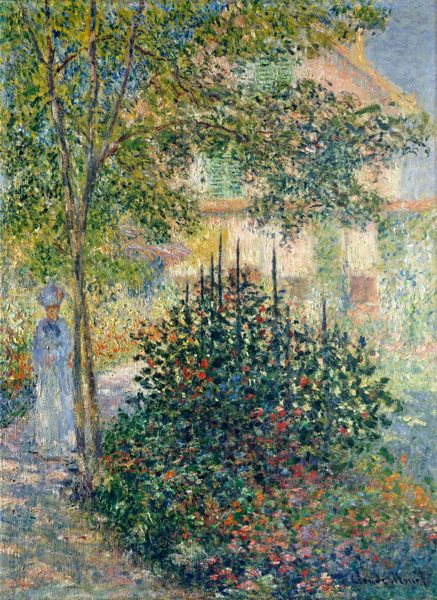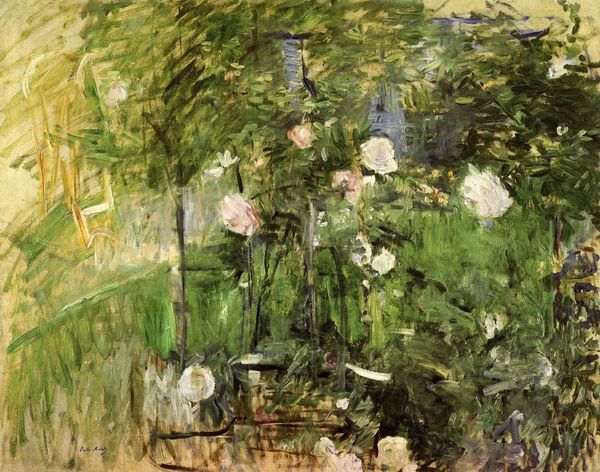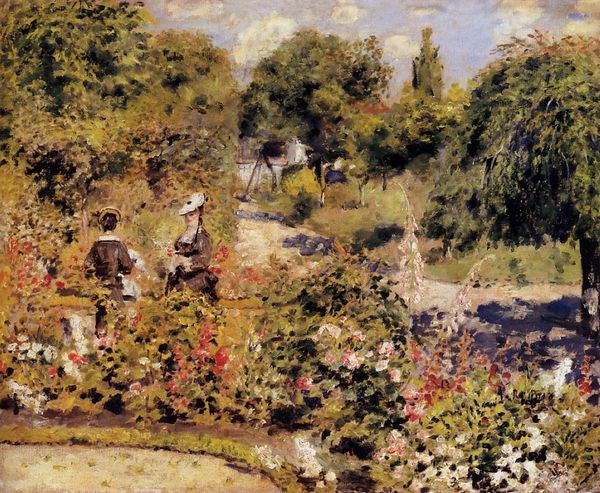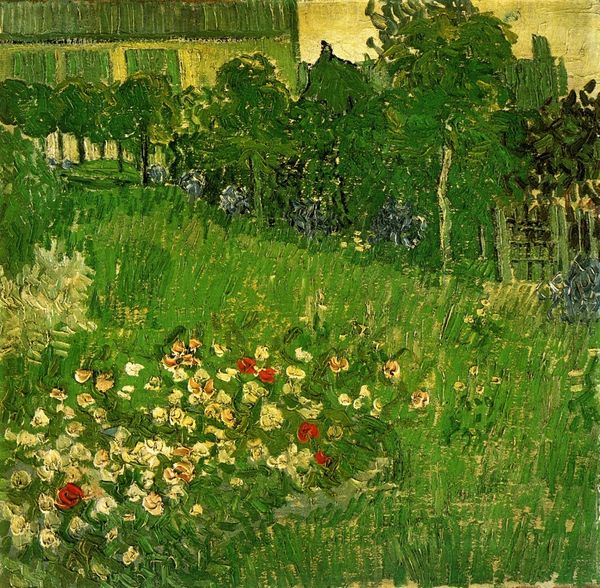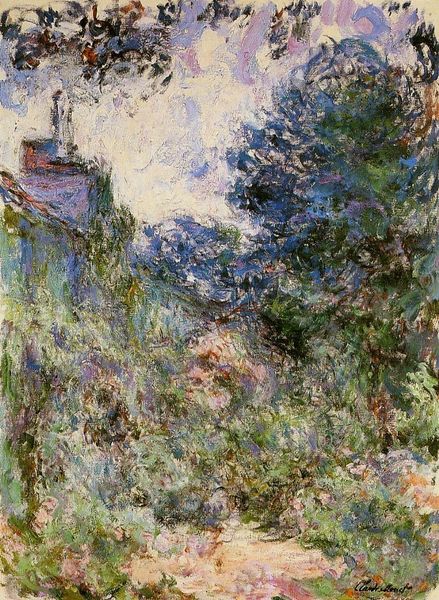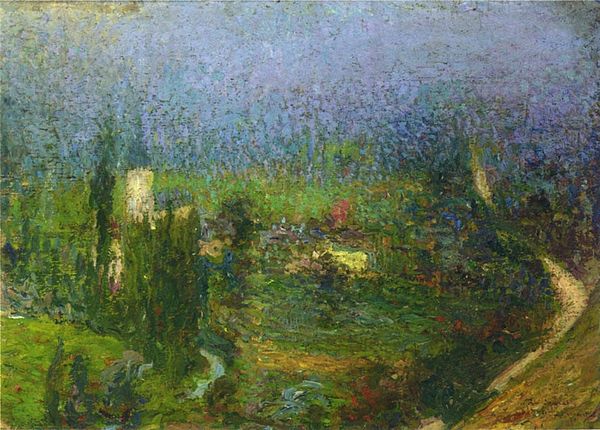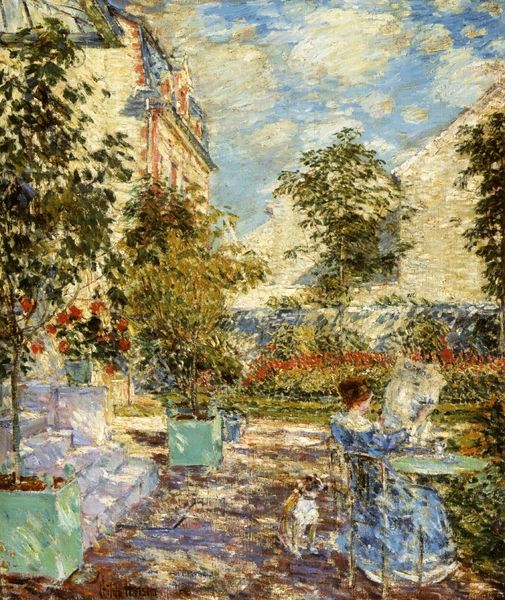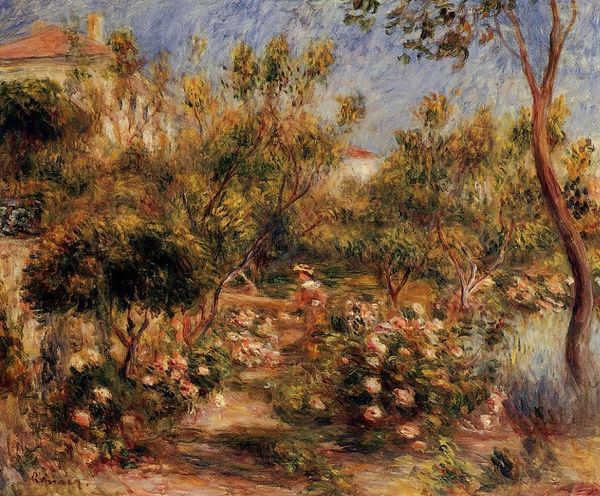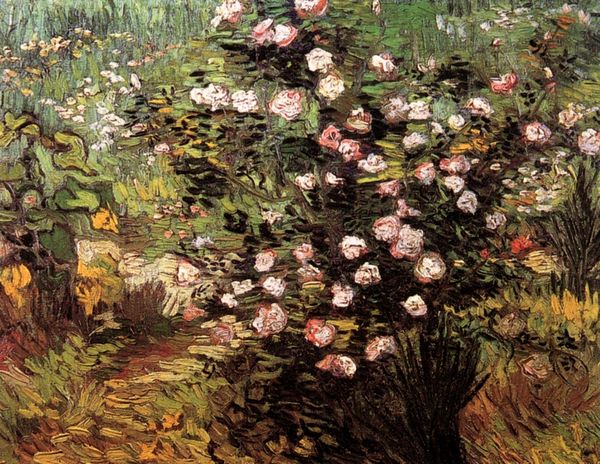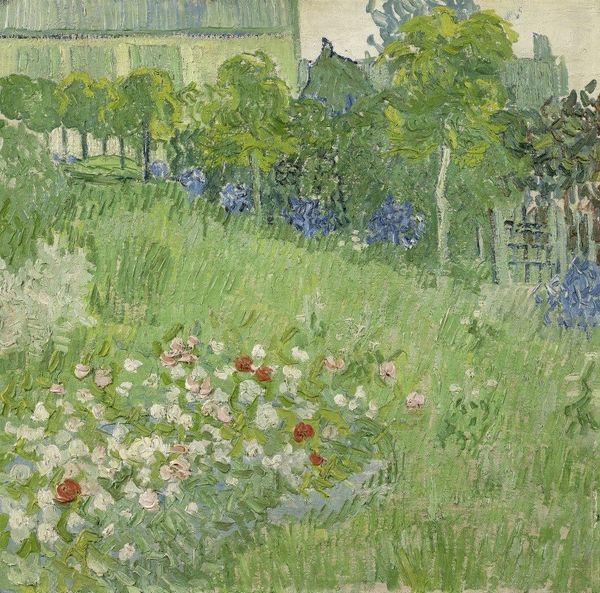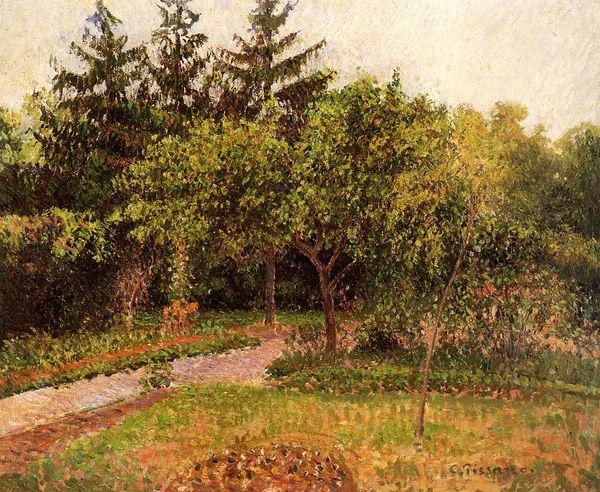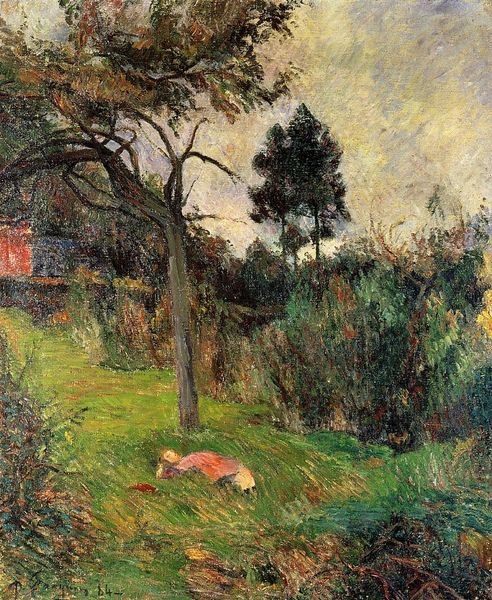
painting, plein-air, oil-paint
#
tree
#
garden
#
painting
#
impressionism
#
plein-air
#
oil-paint
#
landscape
#
flower
#
impressionist landscape
#
oil painting
Dimensions: 92 x 73 cm
Copyright: Public domain
Editor: So this is Berthe Morisot's "The Garden at Bougival," painted in 1884. It's oil on canvas and I love the way it captures the hazy atmosphere, almost like a memory of a garden rather than a precise depiction. How do you interpret this work? Curator: I see a deliberate negotiation of public and private space, typical of Morisot. Think about the socio-political constraints placed on women artists in the 19th century. How could she engage with modern life? She found a powerful space in the domestic sphere, particularly gardens. This allowed her to explore Impressionistic techniques, but it also spoke volumes about her position as a woman artist. Editor: That’s interesting. I hadn't considered it in light of social constraints. Curator: Consider where this was painted - Bougival, a suburb of Paris, increasingly accessible through expanding railway lines, but still on the margins. Was Morisot’s choice a comment on urbanisation, an intentional move away from Paris? Editor: It's fascinating to consider that what looks like a peaceful scene is actually full of these subtle political undercurrents. Do you think her position gave her a unique perspective? Curator: Absolutely. Unlike her male counterparts who could freely roam the city, Morisot often focused on the spaces immediately around her. She transforms these supposedly "feminine" spaces into powerful statements about perception and presence. By exhibiting such scenes, was she also subtly critiquing and challenging the artistic establishment? Editor: That definitely shifts my perspective on the painting. It's not just a pretty garden; it's a complex negotiation of identity and societal expectation. Curator: Precisely! And understanding that makes the painting even richer and more relevant today. Editor: This really makes me want to rethink Impressionism in general. I hadn't thought about their place in a broader context. Curator: And seeing art with a contextual lens helps reveal many unheard narratives.
Comments
No comments
Be the first to comment and join the conversation on the ultimate creative platform.
